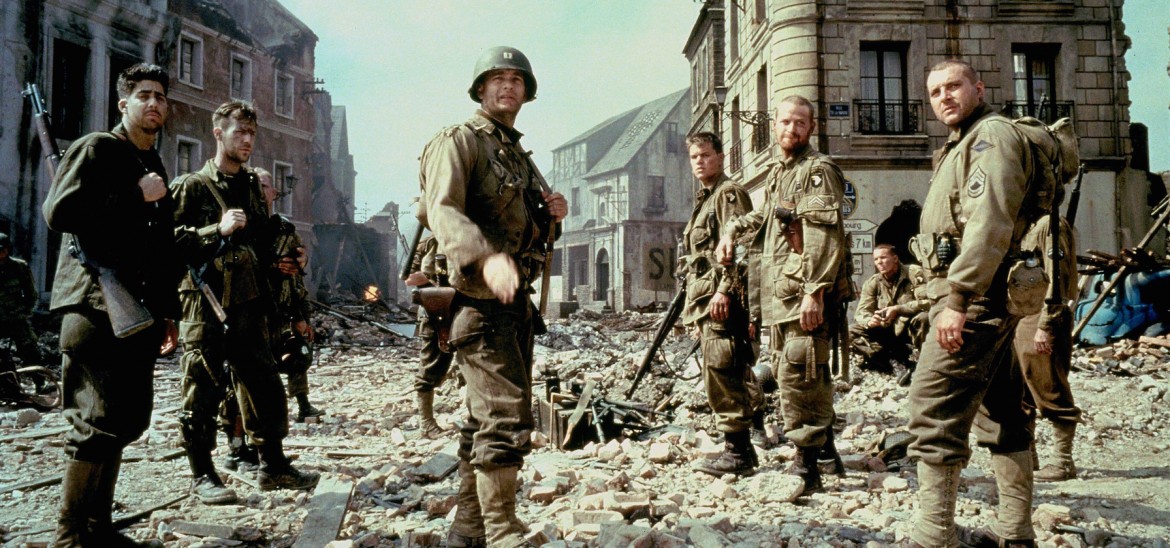Into Film Clubs
Find out everything you need to know about starting an Into Film Club.



Ahead of VE Day on 8 May, former history teacher Daryn Simon outlines why he believes film can be a great catalyst for teaching history, picking out some relevant titles and explaining the different ways they can be used to engender a deeper engagement with the history curriculum.
As a teacher of history and leader of our school film club I believe that film is a powerful tool for helping pupils to develop their knowledge, understanding and, more importantly, their historical and critical thinking skills.
Some of my favourite films are based on historical events (Munich), places (Gangs of New York) and people (Gandhi), hence why I am so passionate about using films in the classroom. The history curriculum naturally lends itself to using film to support pupils' learning, challenge their perceptions and ignite their curiosity. Pupils love watching films. And not just because they don't have to write anything. They often have an emotional reaction to what's happening on screen which can then promote discussion and debates around key themes and topics.
Teaching Narrative:
Narrative is fundamental to the teaching of history and a well chosen film can help to provide that. For example, I might use Saving Private Ryan to help support pupils' understanding of the key events of the D-Day Landings, whilst simultaneously allowing pupils to critically evaluate the efficiency of the Allied invasion. 12 Years a Slave is a wonderful film to provide insight into what life was like on a slavery plantation. It is especially powerful when used in conjunction with extracts from Solomon Northup's brilliant memoir. However, using film to just transmit facts can deprive pupils of the experience of meaningful and challenging historical enquiry.
Historical Enquiries:
Sadly, many historians snub film as a serious strand of historical investigation. I would wholeheartedly dispute this stance as I know from first-hand experience that film is a hugely effective tool for carrying out meaningful historical enquiries. For example, film can be extremely valuable to support an historical investigation into a prominent historical figure such as Queen Elizabeth I (Elizabeth), Martin Luther King (Selma) or Abraham Lincoln (Lincoln). Indeed, if the movie supports a wider study on interpretation then this can help pupils to develop their critical thinking skills as it forces them to assess evidence before reaching informed decisions about the validity of that interpretation. This does, of course, require other forms of evidence to be used, for example, historical texts, photographs, artefacts etc.
Historical Accuracies/ Inaccuracies:
Film can play a role when discussing sources or critically evaluating the historical accuracies or inaccuracies of an event, such as the Kennedy assassination (JFK) or the Holocaust (Schindler's List). I recently used the film Suffragette to evaluate the accuracy of how the Suffrage Movement was portrayed. The pupils engaged positively during the screening and even more so with the use of additional source material afterwards. Through the analysis of newspaper articles, photographs, satirical cartoons and video footage, pupils concluded that the film was, by and large, an accurate portrayal of the Suffragette Movement.
Catalyst for further investigation:
Film used in the classroom can often act as a catalyst for pupils wanting to explore history through other modes of communication such as reading, writing and research. I have certainly found this to be true when using films to support teaching topics such as World War One (War Horse), The American West (Dances with Wolves) and 9/11 terrorist attacks (United 93).
I am fortunate to teach a subject that lends itself so naturally and wonderfully to using films to support learning and I can't imagine that changing any time soon.
We cannot guarantee that all films discussed in this article are covered by the PVSL and are part of our catalogue, but where possible we aim to ensure that this is the case.
A series of articles that highlight how the medium of film can be used to teach a wide variety of subjects and themes.
View other Articles in this columnViewing 4 of 4 related items.

Find out more about our streaming service, designed specifically for UK schools.